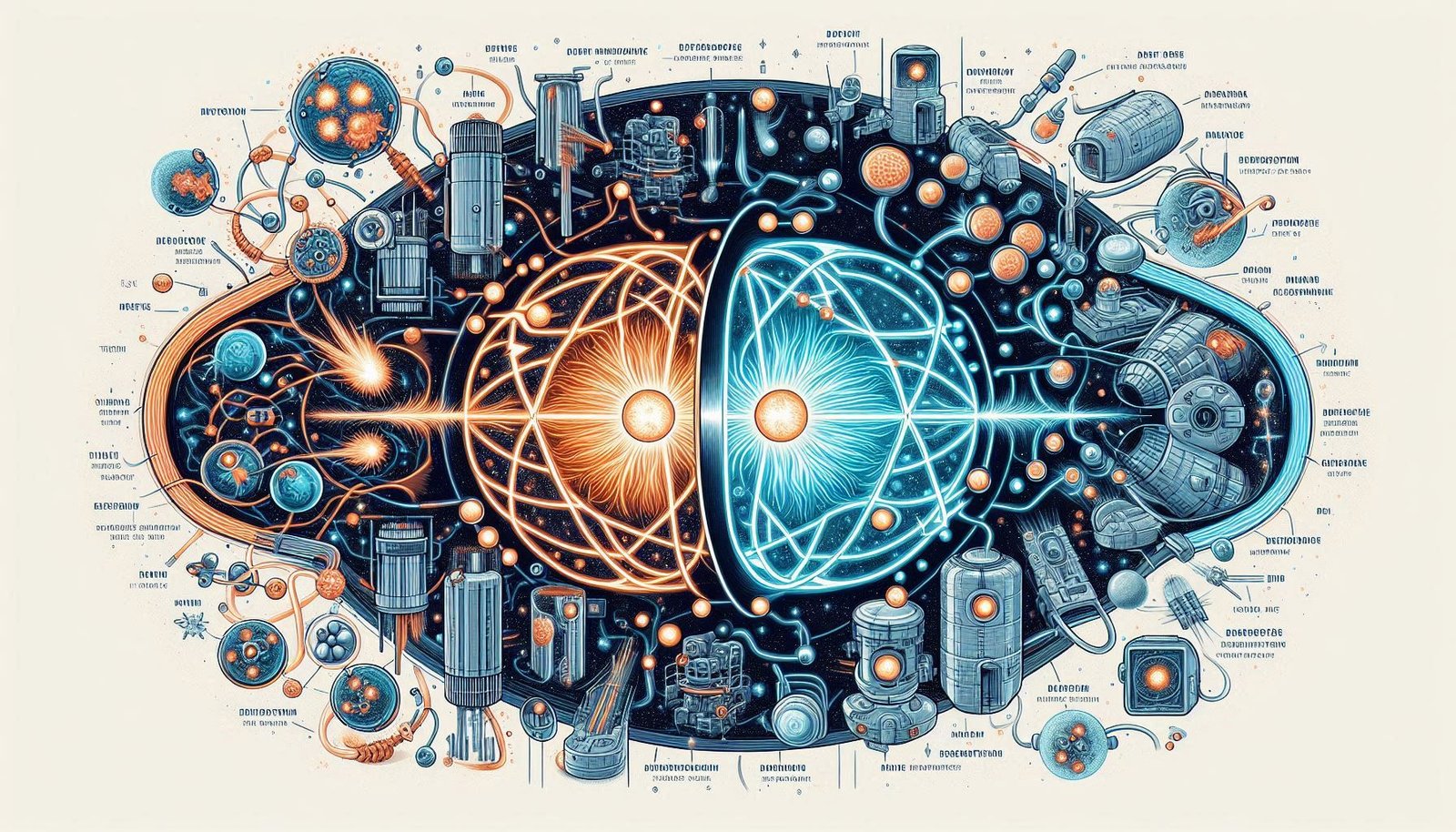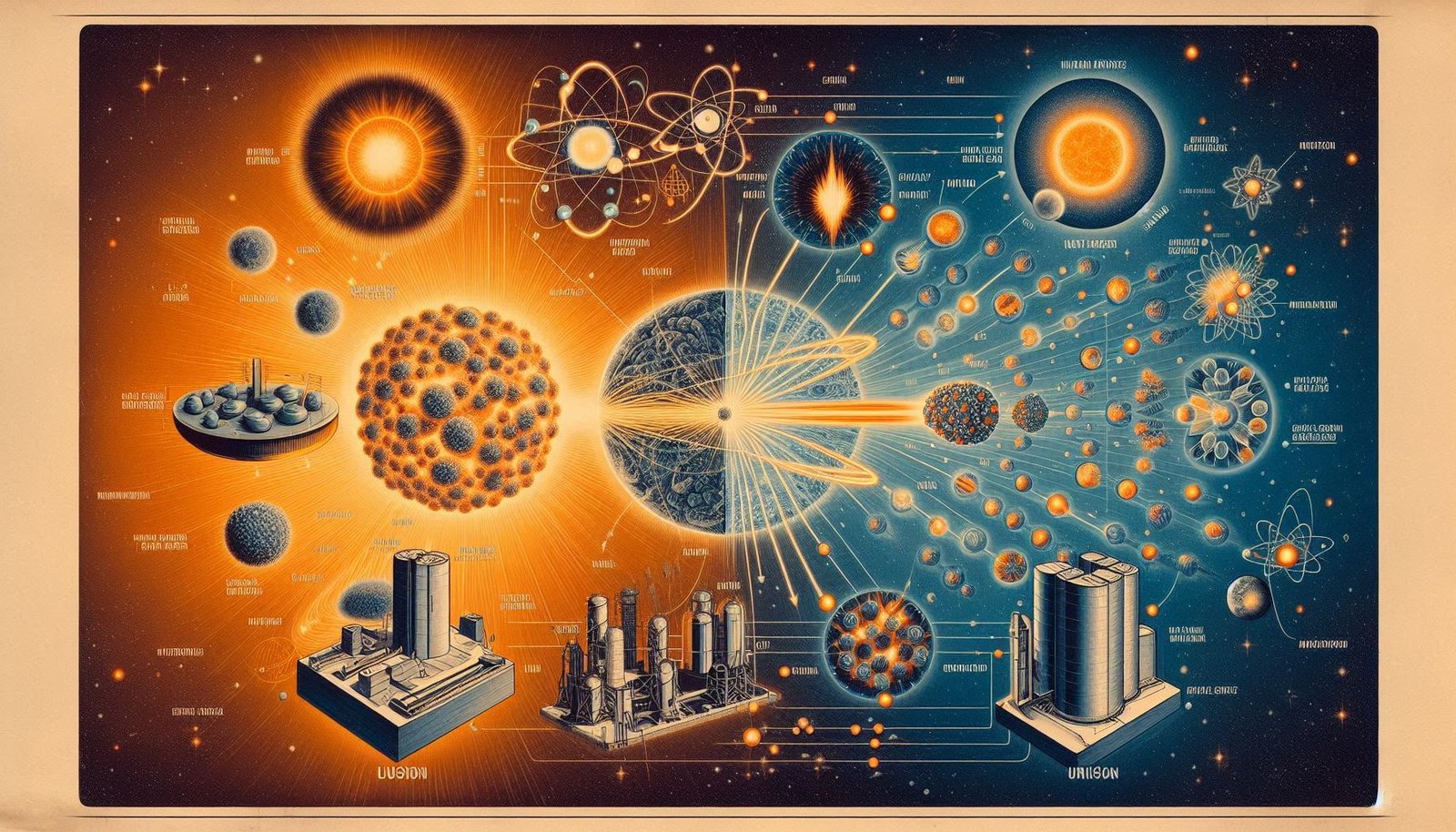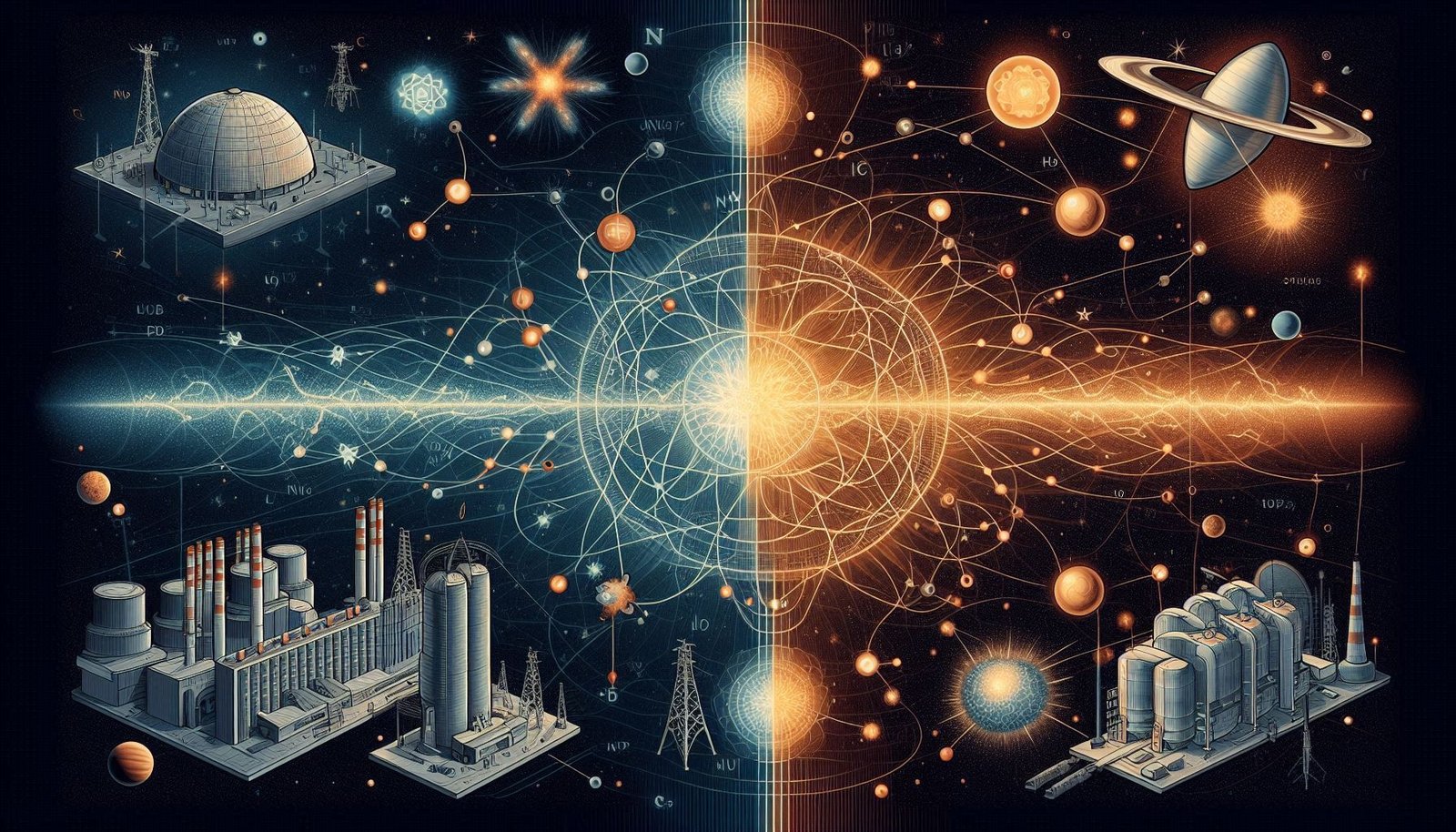Difference between fission and fusion : A Comprehensive Guide
Introduction
Fission and fusion are two nuclear reactions that release vast amounts of energy. While both processes are at the heart of nuclear power and stellar energy production, they work in very different ways. Understanding the this is essential for anyone interested in nuclear science, energy production, or even astrophysics. This blog will explore the principles behind these reactions, their chemical formulas, and the potential applications.
What is Nuclear Fission?
Nuclear fission is a reaction in which a heavy atomic nucleus splits into two or more smaller nuclei, along with the release of energy. This process typically involves the absorption of a neutron by a heavy element, such as uranium-235 (U-235) or plutonium-239 (Pu-239).
Fission Process:
- A neutron collides with a nucleus of Uranium-235.
- The Uranium nucleus becomes unstable and splits into two smaller nuclei, releasing energy and additional neutrons.
- These neutrons may cause further fission reactions, leading to a chain reaction.
Chemical Equation for Nuclear Fission:
The equation for the fission of Uranium-235 is:
235U+n→141Ba+92Kr+3n+Energy^{235}U + n \rightarrow ^{141}Ba + ^{92}Kr + 3n + Energy
In this equation:
- U: Uranium-235
- n: Neutron
- Ba: Barium-141
- Kr: Krypton-92
Key Characteristics of Fission:
- Produces radioactive waste.
- Can be controlled in nuclear reactors to generate electricity.
- Can lead to nuclear explosions if uncontrolled (e.g., atomic bombs).

What is Nuclear Fusion?
It is the process where two light atomic nuclei combine to form a heavier nucleus, releasing a tremendous amount of energy. This reaction powers the sun and other stars, making it the most abundant source of energy in the universe.
Fusion Process:
- Two light nuclei, typically isotopes of hydrogen (Deuterium, D, and Tritium, T), collide at extremely high temperatures and pressures.
- The nuclei overcome their electrostatic repulsion and fuse to form Helium, releasing energy.
Chemical Equation for Nuclear Fusion:
The fusion of deuterium and tritium can be represented by the equation:
2D+3T→4He+n+Energy^{2}D + ^{3}T \rightarrow ^{4}He + n + Energy
In this equation:
- D: Deuterium (Hydrogen isotope)
- T: Tritium (Hydrogen isotope)
- He: Helium
Key Characteristics of Fusion:
- No long-term radioactive waste.
- Requires extremely high temperatures (millions of degrees Celsius) and pressure.
- Powers stars like the sun.
- Considered the holy grail of clean energy, but practical fusion reactors are still in development.
Difference between fission and fusion
Fission vs. Fusion: A Comparison Table
To highlight the differences between nuclear fission and fusion, here is a comparison table:
| Feature | Fission | Fusion |
|---|---|---|
| Reaction Type | Splitting of a heavy nucleus into smaller nuclei | Combining light nuclei to form a heavier nucleus |
| Energy Output | High but less than fusion | Extremely high energy output (e.g., powers the sun) |
| Fuel Used | Heavy elements like Uranium-235, Plutonium-239 | Light elements like Hydrogen isotopes (Deuterium, Tritium) |
| Waste | Produces radioactive waste | Produces minimal radioactive waste |
| Occurrence | Used in nuclear reactors and atomic bombs | Powers stars; used in hydrogen bombs |
| Chain Reaction | Can be a chain reaction (self-sustaining) | Requires extreme conditions, no chain reaction |
| Energy Source | Current source of nuclear energy (e.g., nuclear power plants) | Potential future energy source (under research for reactors) |
Graph: Energy Released in Fission vs. Fusion
Below is a graphical representation of the energy released per unit mass in fission and fusion reactions:
Graph Description:
- The Y-axis represents energy output (in MeV per nucleon).
- The X-axis represents atomic mass.
The energy released per nucleon is much higher in fusion than in fission, making fusion more efficient as an energy source. However, achieving the conditions required for fusion (high temperature and pressure) is much more challenging than for fission.
Applications of Fission and Fusion
Nuclear Fission Applications:
- Nuclear Power Plants: Fission reactions in reactors provide electricity to millions of homes worldwide. For example, in India, nuclear energy contributes about 2.5% of the total electricity generation.
- Nuclear Weapons: Atomic bombs like those used during World War II rely on uncontrolled fission reactions.
Nuclear Fusion Applications:
- Stellar Energy Production: Fusion reactions power the sun, which is the ultimate source of energy for all life on Earth.
- Future Energy Source: Fusion research, such as the ITER project (International Thermonuclear Experimental Reactor), aims to develop practical fusion reactors to produce clean and sustainable energy.

Environmental Impact of Fission and Fusion
| Factor | Fission | Fusion |
|---|---|---|
| Radioactive Waste | High, long-term radioactive waste | Minimal, short-term waste |
| Carbon Emissions | Low (as a by-product) | Zero emissions |
| Safety Concerns | Risk of nuclear meltdowns (e.g., Chernobyl, Fukushima) | Safer, but requires extreme conditions to initiate |
FAQ: Fission vs. Fusion
1. What is the primary difference between fission – fusion?
Fission involves splitting a heavy nucleus, while fusion combines light nuclei. Fusion releases more energy than fission but is harder to achieve.
2. Which process is used in current nuclear power plants?
Fission is used in nuclear power plants to generate electricity. Fusion is still under research.
3. Is nuclear fusion a viable energy source?
While fusion promises cleaner and safer energy, practical fusion reactors are still in development. Projects like ITER aim to make fusion energy a reality in the coming decades.
4. Does fusion produce radioactive waste?
Fusion produces minimal radioactive waste, especially compared to fission. Most of the waste from fusion has a short half-life.
5. What are the environmental concerns associated with fission?
Fission produces long-lived radioactive waste and poses risks of nuclear meltdowns, which can have catastrophic environmental consequences.
Conclusion
Fission and fusion are both critical processes in nuclear science, with distinct mechanisms, energy outputs, and applications. While fission is currently used for nuclear power, fusion holds the promise of a cleaner, safer, and more abundant energy source for the future. Understanding these differences helps us appreciate the complexity and potential of nuclear energy.
With ongoing research and development, particularly in the field of fusion, the future of nuclear energy could offer solutions to many of the energy challenges we face today.
References:
- World Nuclear Association: Nuclear Fission
- ITER Project: Nuclear Fusion
- International Atomic Energy Agency (IAEA): Fission and Fusion
Also Read
How to read a book perfectly : 5 easy ways to do it!

